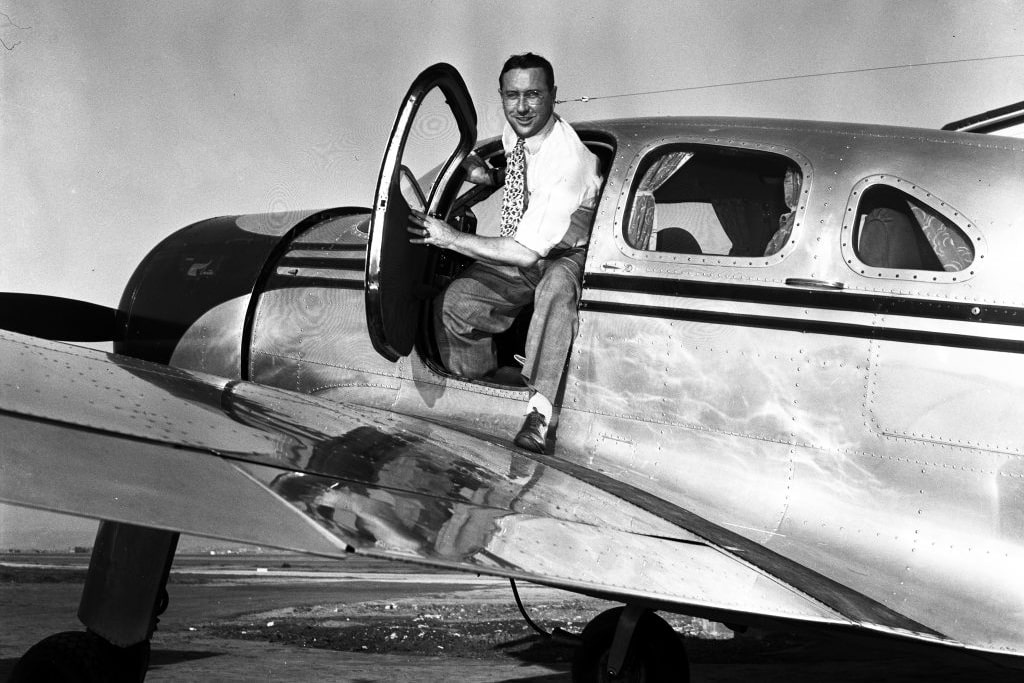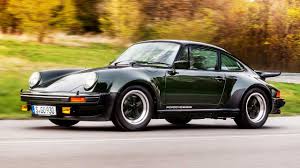
Do you know the story of the founder of Garrett turbochargers?
John Clifford Garrett’s name is inextricably linked to the history of the Turbos. Garrett’s passion for engineering and aviation was evident from an early age, later he began working as an engineer. However, he had the ambition to run his own aviation corporation and on May 21, 1936, he created Aircraft Tool and Supply Company (later Garrett Supply Company) in a one-room office in Los Angeles. By the late 1930s, the company’s first product had been built, an aluminum aircraft intercooler. In the late 1940s, post-war planning had paid off with its listing on the New York Stock Exchange. The 1950s were marked by Garrett’s diversification and expansion. The company’s experience and knowledge of aerospace design underpinned the development of the company’s ground-based business, and Garrett soon became the name synonymous with engine momentum in the automotive sector.
Do you know how the Turbos Garrett company was founded?
The turbo story begins in 1954 when the Garrett T15 turbo was combined with the Caterpillar D9 tracker. Although the Oldsmobile Jetfire Turbo Rocket became the first turbocharged production car in 1962, the impact of technology was strongest on commercial vehicles when in 1967 Deere selected the Garrett T04 turbo for its range of farm tractors … and all industry followed suit. But it was in the 1990s that the turbo became general and global, when Garrett’s new Variable Nozzle Turbine (VNT) technology enabled the 1991 Fiat Croma to adjust exhaust gas flow in direct response to specific requirements. the motor. And when Volkswagen-Audi combined VNT technology with its 1.9L diesel engine for its launch at the Frankfurt Motor Show in 1995.
Boosted by Deere farm tractors, the other tractors will soon adopt turbochargers. The Garrett® TO4 model made its way into more and more commercial diesel applications as engine manufacturers recognized the mutual benefits of better performance, higher torque, and increased fuel efficiency. In the mid-1970s, the mass-market turbo era, and for trucks, also began a revolution: 30 years later, almost all commercial diesel vehicles were equipped with increasingly sophisticated turbochargers.

The first spark-ignition turbocharged engines qualified for the Indianapolis 500 in 1966, when three 2.75-liter 4-cylinder Offenhauser engines with Garrett® TE06 turbochargers formed the initial lineup.

Two years later, in 1968, Bobby Unser became the first to win the Indy 500 with a turbo spark ignition engine.
For passenger cars, the 1970s proved to be a turning point for the turbo industry. The Porsche 911 Turbo (KKK turbo with Garrett® Wastegate) was introduced in 1975, but it was in 1977 that the Saab 99 brought the benefits of turbo technology to a wider audience with a 2-liter turbocharged gasoline car that achieved the same performance level than a normal aspirated 3-liter engine. This was soon followed by the Mercedes 300 Turbo Diesel, which offered car drivers fuel efficiency and impressive driving ability. Buick then announced that the 1978 Buick Regal and Le Saber Sport coupes would be turbocharged.

Over the next 20 years, manufacturers launched model after model of increasingly sophisticated turbocharged passenger cars. Ironically, although the technology received a boost in the US. In the USA, the turbo had its biggest impact on passenger cars in Europe, where more than 50% of passenger cars were already turbocharged. Today, manufacturers around the world are turning to technology to help provide fuel efficiency and meet increasingly stringent emission standards in the US. USA, Europe and Asia.
Innovation Timeline with Turbo Garrett
The history of Garrett turbo technology shows some of the most important moments in the history of the car.
PRESENT - 2010
2018
Launch of the electrified drive concept for a 48-volt electrical system, which increases engine power and torque, plus energy recovery.
2018
Next-generation cybersecurity solution for vehicle system communications and external cellular and satellite connectivity preview in Detroit.
2017
Third generation dual-displacement gasoline turbocharger released for 1.5-liter 4-cylinder engines, increasing power from 90kW / L to over 100kW / L and torque from 175Nm / L to over 200Nm / L compared to prior technology.
2017
TwoStage Wastegate-VNT compact turbocharger “side-by-side” with electric drive featured for Opel Astra 1.6L engine, offering faster response time, up to 17% more power density and 10% torque gain, with up to 20 percent NOx reduction and 10 percent CO2 emissions over industry standards.
2017
Garrett’s turbo technology records the eighteenth consecutive victory in the famous 24 hours of the Le Mans endurance race, helping the Porsche Motorsport LMP team to their third consecutive victory.
2017
Automotive News PACE “Innovation Partnership Award” with Volkswagen for the Gasoline Variable Nozzle Turbine (VNT), helping VW achieve the best cost-effective fuel economy and carbon dioxide emissions (108g / km) for a 1,250 vehicle kg through a variable geometry turbine stage combined with a 1.5L Miller cycle engine
2016
The TwoStage fuel cell electric motor compressor introduced for Honda Motor Company’s hydrogen powered Clarity Fuel Cell vehicle applies oil-free air foil bearing technology to advance zero emission vehicles.
2015
Garrett partners with Scuderia Ferrari in F1, developing one of its most efficient turbocharger applications, allowing the 1.6L V6 to produce power equivalent to a 16L turbocharged engine in a fraction of the size.
2014
Winner of “Green Innovation” for PSA’s chosen “Monoblock Wastegate” design for a new reduced 1.2L engine to replace its 1.6L four-cylinder engine, applying computational fluid dynamics and finite element analysis to optimize system performance .
2012
GTD, the latest generation VNT ™, was released in a large number of EU6 applications worldwide, covering the full spectrum of engine displacement.
2012
Gasoline DualBoost was introduced – an industry first turbo that uses an axial turbine most commonly found in aerospace applications, along with a double-sided compressor.
2011
The Range Rover TDV8 2011 incorporates the world’s first two-stage parallel sequential system into a V8 diesel engine.
2011
John Deere Power Systems introduces its 9L off-road engines with the second-generation VNT DutyDrive turbocharged for the first time paired with electro-hydraulic drive as part of a TwoStage system.
2011
The world’s first ball bearing turbo designed for the premium diesel segment launched on Daimler’s new 3.0L V6 engine.
2010 - 2000
2010
VNT DualBoost turbo with ball bearing launched on Ford F250 / 350 diesel trucks.
2010
The Honeywell petrol turbo becomes the first to power the Fiat MultiAir 1.4L engine.
2010
Honeywell extends the scope of its ball bearing technologies from commercial and heavy-duty commercial vehicles to premium cars, light-duty diesel trucks, and medium-duty commercial vehicles.
2010
Garrett equips the smallest 2-cylinder turbo diesel engine in a key application in India.
2010
Honeywell powers the world’s most fuel-efficient five-seat passenger car: the VW Polo BlueMotion 1.2L diesel, which offers an industry-leading 87g / km CO2 rating.
2010
Honeywell upgrades the 2011 Chevy Cruze, which offers a class-leading 42 mpg highway rating.
2009
The innovative TwoStage parallel turbo system powers one of the most talked about cars of the year: the Jaguar XF
2008
BMW X-6 ActiveHybrid, the world’s first gasoline-electric turbo hybrid, powered by Garrett technology
2008
Garrett powers the innovative Ford Motor Company EcoBoost engine in the Lincoln MKS, demonstrating the feasibility of downsizing through the turbocharger and heralding a new turbo era in the US
2007
Honeywell Mercedes E320 Bluetec turbochargers, a clean diesel engine for the American market.
2006
The world’s first TwoStage Parallel turbo makes its debut in the PSA group’s Peugeot 407 and 607, and the Citroen C5 and C6.
2004
The BMW 1 Series is presented with third generation VNT ™ technology.
2002
International adopts GT37 AVNT for Ford Power Stroke engines for F250 and F350.
2000
Smart features 0.6L gasoline and diesel turbo engines, utilizing Garrett’s micro turbo with patented integral bearing design on the gasoline engine.
2000
VNT or VNT DutyDrive twin-shaft turbos are introduced in DDC series 50 bus engines.
2000 - 1990
1999
BMW incorporates Rotary Electric Actuator (REA) technology into its 7-series V8 turbo diesel engine.
1998
VW Golf and Audi A4 are the launch cars for second generation VNT ™ technology.
1997
The first ball bearing turbo for commercial diesel vehicles makes its debut on the Nissan Diesel PF6T engine.
1995
The TDI revolution begins, with Garrett’s VNT ™ Multivane transforming the Volkswagen-Audi 1.9L direct injection diesel engine.
1991
Fiat puts a VNT ™ turbo into the Croma, paired with a 1.9L direct injection diesel engine.
1990
The Chrysler Dodge Daytona Shelby Turbo-Z intercooled is the first car to use a VNT turbocharger with electronic boost control.
1990 - 1954
1989
Nissan Diesel embraces Garrett technology as the world’s first VNT volume production turbo in its 12.6L for heavy trucks.
1988
Nissan Motors introduces the Honeywell Garrett T2 ball bearing in its gasoline engine for its Silvia model.
1982
Rolls Royce launches the first Bentley Mulsanne Turbo, a 6.75-liter gasoline engine that uses a single Honeywell Garrett T04B turbocharger along with a separate Normalair-Garrett wastegate.
1978
The Daimler Benz Mercedes 300 Turbo Diesel was launched with a Wastegate turbo.
1978
The Daimler Benz Mercedes 300 Turbo Diesel was launched with a Wastegate turbo.
1978
Buick begins production of the world’s first turbo V6 car, powered by Garrett.
1977
Renault ushers in the Formula One turbo era, with Garrett driving the first car to compete with a 1.5L turbocharged engine.
1968
Bobby Unser is the first winner of the Indianapolis 500 in a turbo car, with Garrett driving the 2.75L Offenhauser.
1967
Deere farm tractors select Garrett T04 turbochargers – the entire tractor industry is soon introduced.
1962
Oldsmobile Jetfire Turbo Rocket, equipped with Garrett T05 with integrated turbocharger, is the first turbocharged production turbo car.
1954
The Caterpillar D9 tracked tractor, using Garrett technology, becomes the first American-produced turbocharged diesel vehicle.












